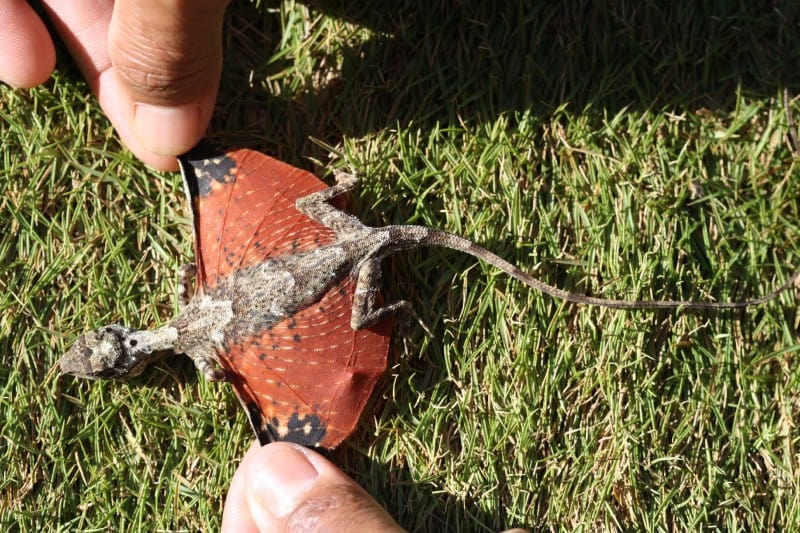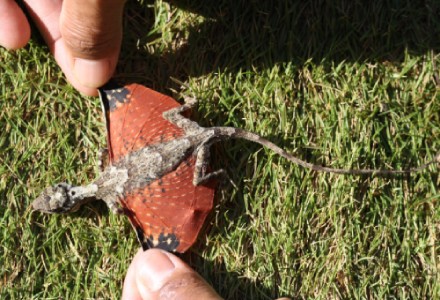
Draco Volans Facts
- First of all, after seeing the Draco Volans, one might think that dragons are real. This particular tiny dragon, however, doesn’t breathe fire just yet. Therefore, it’s not quite as dramatic as the much larger dragons in Game of Thrones. Just like the Marine Iguana, this little dragon must be a relative of Khaleesi’s children.
- Furthermore, the incredible creature constitutes a species of lizard native to specific portions of Southeast Asia. To be clear, it remains incapable of true flight. However, in an astounding ability for a reptile, it does have the ability to glide between the trees for distances of as much as 26 ft (8 m).
- In addition, it feeds as an insectivorous creature, mainly consuming termites and ants. But it will, of course, also consume other insects opportunistically. Finally, although long known to the local inhabitants of its native range, the Draco Volans was not classified scientifically until 1758.
Related Articles
Komodo Dragon Texas Horned Lizard Thorny Dragon
Draco Volans Physical Description
Despite its fearsome appearance, the Draco Volans remains a rather moderate-sized lizard. That’s due to the fact that mature adults typically attain an average length of only about 12 in (30 cm). Yet, exceptional specimens do occasionally occur.
Furthermore, the fascinating reptile does display a slight degree of sexual dimorphism. However, that generally shows itself in two ways, both of them slight. First, a small color difference appears on the membranes which allow it to glide from tree to tree. Secondly, females attain a slightly larger size.
On the male, the underside of the wing-like membranes presents either a tan or bright orange color. Small black bands also appear. However, on the female, the same base color appears, but the black markings appear as irregular patterns, instead of in even bands.
Additionally, the wingspan typically measures about 3/4 the length of the body. When not in use, the flaps of skin it uses to glide are kept folded against the body. Meanwhile, the head usually develops comparatively blunt-shaped, in comparison with related animals.
- Kingdom: Animalia
- Phylum: Chordata
- Class: Reptilia
- Order: Squamata
- Family: Agamidae
- Genus: Draco
- Species: D. volans
Draco Volans Distribution, Habitat and Ecology
Most notably, the Draco Volans inhabits rather remote regions of Indonesia, Malaysia, and the Philippines. Even within that area, individuals inhabit specific areas, living almost exclusively in regions of the tropical forest.
The astonishing lizard also evolved as highly territorial by nature. As a result, males typically claim 2-3 trees as personal territory. Not only that, but usually 1-3 females inhabit each tree, creating, in effect, his own personal harem.
Also, after mating, the female almost always descends to the floor of the forest below. There, she proceeds to lay an average of 1-5 eggs. These she then buries in the loose soil, where they remain until time to hatch.
Though the eggs take 1-2 weeks to hatch, the female typically only guards them for a few days at most. During the following period the eggs remain vulnerable to predators. Even after hatching, the female attends to the young only occasionally.
Species Sharing Its Range
Chinese Lantern Indian Bullfrog Jewel Wasp
Check out our other articles on Breathtaking Primates of the World, Bull Shark, Dallol Hydrothermal Field, Iridescent Bark Mantis, Northern Bald Ibis, Bleeding Tooth Fungus

